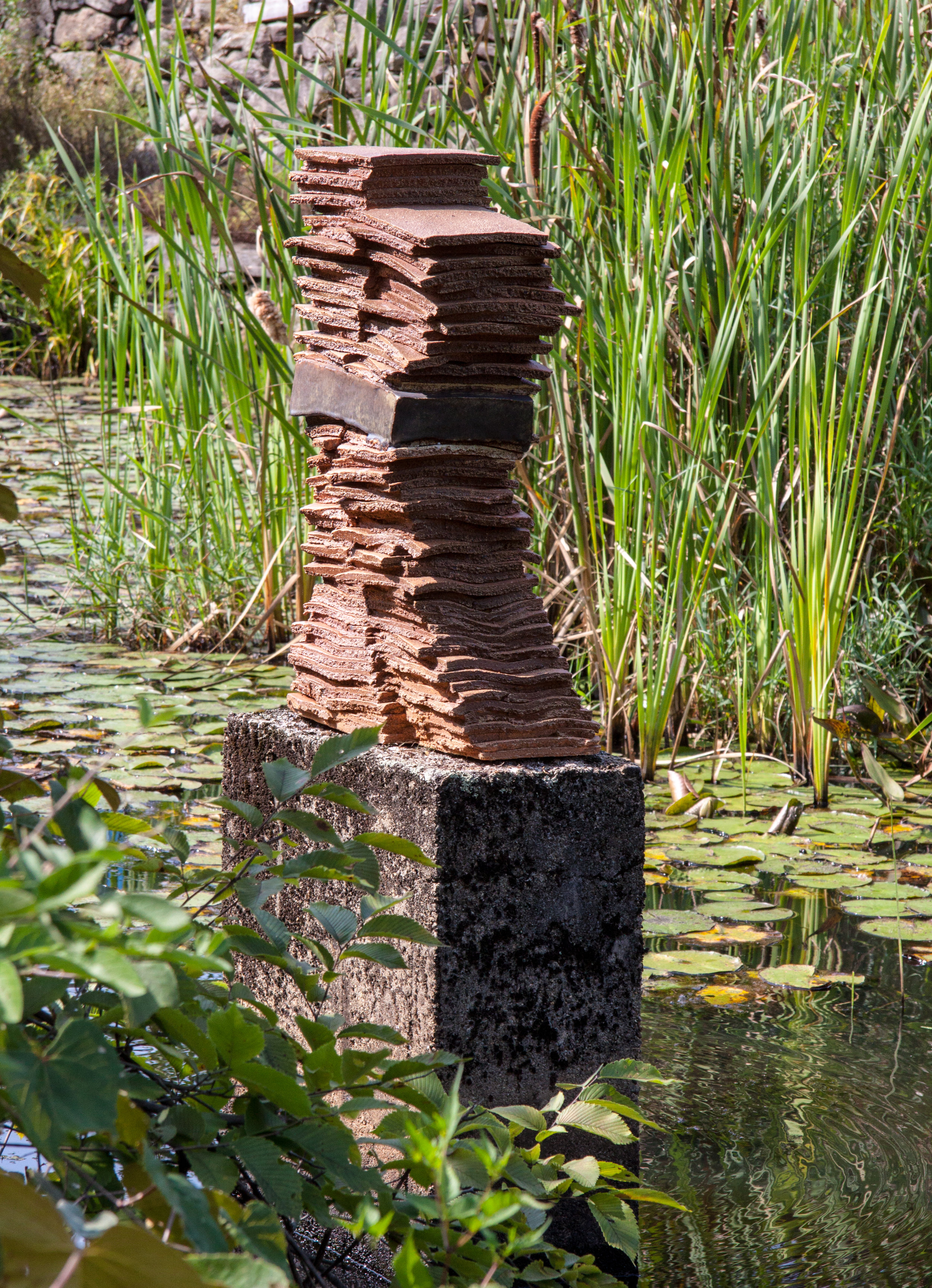Today is for poetry at Old Frog Pond Farm. This afternoon, twenty-four poets will gather and walk the trail around the pond and through the woods, along the orchard, to the meditation hut, with a stop at the rock turtle, and back to the dam. The poets will be reading the poems they began writing earlier in the year inspired by a visit to the farm.
We need poetry to mine the subtle, the tenuous, the painful, the ecstatic, and elegiac feelings of our humanness. We need poetry when we are tired, hurt, hassled, and missing connection to our own heart. “I come to the farm,/having very nearly forgotten myself,” begins Lucinda Bowen. “And here blooms a memory. . . my surprise at improbable sweetness.”
Early in the year, Susan Edwards Richmond, organizer of the event, and I, choose a theme. This year’s subject, Memoir, “invited the poets to dig deeper, to go beyond surfaces, and draw, sometimes unbidden, wells of feeling from the landscape,” wrote Richmond in her introduction to the chapbook of poems.
Susan Edwards Richmond, Plein Air Reading, 2013
Poets sign up to participate. Throughout the spring and early summer, they visit the farm and walk the paths. When they come upon a view, a place, a tree, or a sound that awakens their muse, they stop and write. They return home, work on their poems, sometimes visiting again. In mid-summer, they submit their poems to Richmond, editor of the chapbook. For some, Richmond responds with suggestions, working closely with the writer to enhance the poem; others’ work arrives fully fledged. Then Richmond orders the collection, giving shape not only to the book, but to the walking event. Our slow-moving herd of poetry appreciators can’t be running from the dam to the orchard to the bell; then flying to the meditation hut and back again — or the walk would take us far into the evening hours.
Sometimes it is one of the outdoor sculptures at the farm that moves the poet to words. For poet David Davis, the ringing of Paul Matisse’s Olympic Bell brought back memories of Nepal. “Forty years ago in Katmandu/I heard a monk ring a temple bell/That shook my chest and opened my ears.” Polly Brown begins her poem with, “A sculpted figure by the pond,/gathering sky in her round arms,/Is my mother—alive but so lightly tethered/to the place and condition of her body.” She, too, mentions the bell, “hauling on the hammer I sound the bell/in the woods,/ and they [her mother and father] fly to me.”
Some poets invite us to feel the plight of the greater world. Linda Fialkoff writes, “So many refugees/choked into one small boat/fueled by a damp, ragged/body long held hostage.” It is as if she knew that Alicia Dwyer’s Suspended Encampment, a hanging sculpture behind the Medicine Wheel, would be arriving for the sculpture exhibit. Dwyer’s sculpture not only refers to the plight of Monarch butterflies, but to the migrations of people, the refugees throughout Europe, and now, the homeless millions in the aftermath of the recent violent storms and earthquakes.
Suspended Encampment, Alicia Dwyer (partial) Photo:Robert Hesse
bg Thurston picks up a stone and hears, “Sometimes sorrow/sits like a stone in your heart/and you are unable to lift it.” For Heather Connelly Bryant, the raspberry patch evokes a strong memory, “Yet I was wrong—now there is new life, new love, new/hope— infidelity no longer hangs in the air, everywhere.” Richmond, also wrote near the raspberries, “each of us now with our own green past, red stained fingers. Only rarely/was there enough/but we were always sated.”
Richmond and her husband brought their children to pick raspberries at this farm years before I moved in, and she was so happy when she learned that I would continue to care for the patch and open it for public picking. Since that time, Richmond and I have collaborated on many projects — Wild Apples, a journal of nature, art, and inquiry, five years of Plein Air Poetry at the farm, and our most recent collaboration, a children’s book, Where’s My Bonkers? about a girl, her mother, and an apple. It’s always about collaboration at the farm. We share, inspire, and co-create together.
Cover Art & Design: Lynn Horsky
We invite you to join us this afternoon, Sunday, September 17 at 2pm to walk and listen to the poets read their poems. I guarantee you will be sated.
If you can’t make the event, a limited number of chapbooks will be for sale at the farmstand and on the farm’s website. The walk is free and open to the public.







